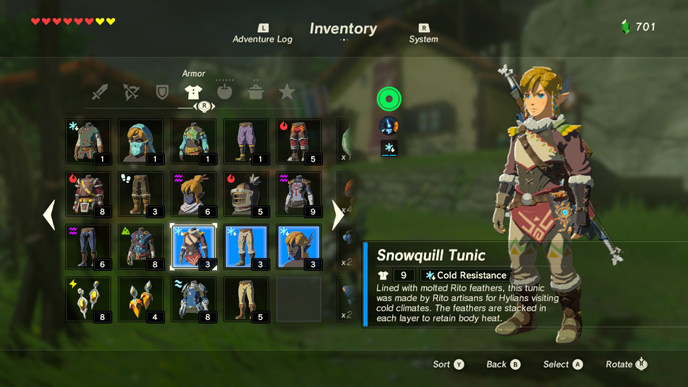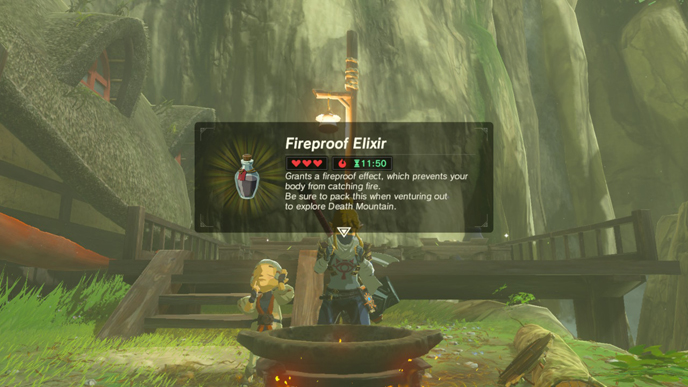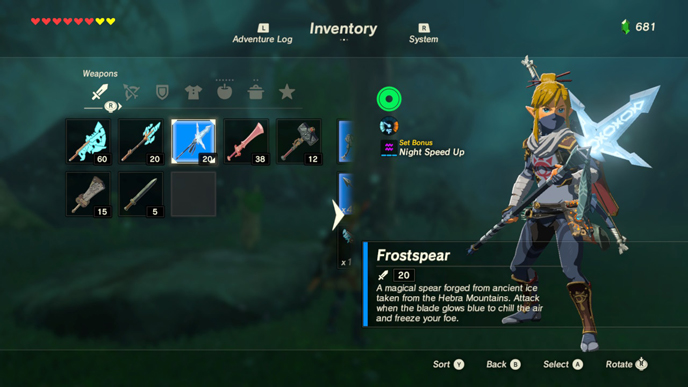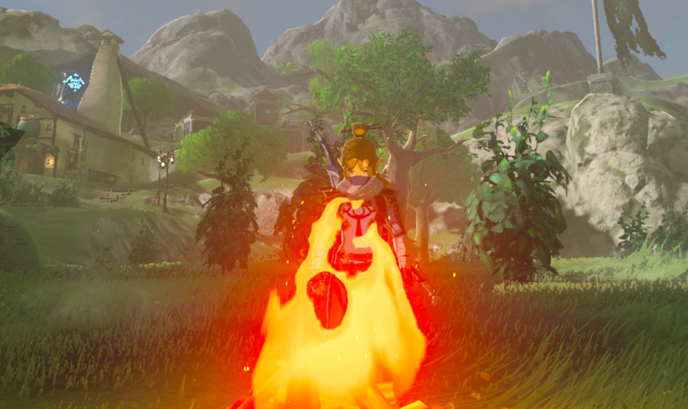How To Survive The Elements in Breath of the Wild
Games Lists The Legend of Zelda: Breath of the Wild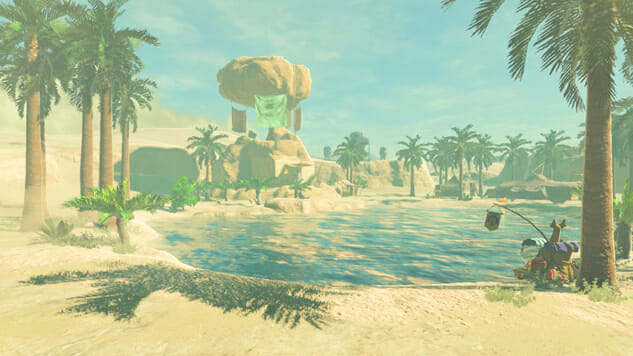
The latest Legend of Zelda game is a testament to Nintendo’s astounding attention to detail, especially when it comes to weather, temperature and environmental hazards. Breath of the Wild has about six basic climates and generally they’re specific to a region and its accompanying race, with a little overlap between. Gerudo, home to the all-female Gerudos, is hot during the day but cold at night. The greater Eldin area, where the Gorons live, is burning-hot. The Lanaryu region, where the Zora hail from, is cold and wet. Necluda is cold and snowy. Hebra and Tabantha, areas claimed by the Rito, are windy and snowy. And the mid regions, representing the Hylians (including Faron and Hyrule proper), are mild with frequent thunder and lightening storms (Akkala, in the upper northeast, has similar weather). These are not hard and fast rules but generally you should expect these conditions when traveling in those areas.
Survival in greater Hyrule depends on your ability to adapt quickly and have the proper tools on hand. Here are four tips for facing the challenges of the Hylian wilderness.
Don the appropriate garb
The best way to combat the elements in the many environments of Breath of the Wild is to wear the right thing. Fortunately, each region offers a specific outfit to help. On the path to Death Mountain is a questline that will award fireproof armor, in Rito Village you can purchase cold-proof attire, in Gerudo you’ll be given heat-resistant garb, and in Lanaryu, the Zora will give you a chestpiece that lets you swim up waterfalls (combating the area’s constant rain, which makes climbing difficult). Climbing Gear, which gives you a dramatic boost in grip and speed while scaling walls and mountains, can be found in three pieces at the Ree Dahee shrine of Dueling Peaks, the Chaas Qeta of the Necluda Sea, and the Tahno O’ah shrine east of Mount Lanayru. In the market at Gerudo Valley you can also trade in your gems for various element-resistant pieces of jewelry, which can help a lot (my Topaz, electricity-resistant earrings are my favorite and they’re very handy).
This mandate also includes what not to wear: never leave a metal melee weapon or bow equipped during a thunderstorm, which will get you electrocuted, and never leave an item of wood equipped on Death Mountain, or it will burn up.
Elixirs, meals and frozen foods
The second best way to survive the dangerous conditions in Hyrule is to carry elixirs and meals that offer boosts and resistance buffers. Elixirs are made by combining one monster part to four critters (frogs, butterflies, dragonflies). Meals are created by cooking food together at a pot. By using ingredients that have identical effects, you can put together items that powerfully overcompensate for and keep the elements at bay.
You’ll have to keep a steady supply of ingredients on hand at all times, and keep in mind that you can only put together meals and elixirs at a cooking pot, and not at a fire. You can read up on that more at our Breath of the Wild recipes guide. Critters that are best for lightning resistant elixirs typically spawn in Gerudo Valley or during storms. Heat resistant critters are usually found in cold regions, and vice versa. In windy areas or mountainous regions (especially where there is a lot of rain) you’ll be climbing and using the paraglider a lot, so stock up on Stamina potions, which can be made with Restless Crickets or Staminoka Bass.
You can also throw food on the ground while you’re in icy, mountainous regions and it will turn into “frozen food.” You can then store this and eat it while in hotter areas and it will cool you down.
Wield elemental weapons
One of the best hidden tidbits of Breath of the Wild is the effect of elemental weapons. If you’re carrying a Flameblade or Flamespear, it will help warm you while in colder regions, and the Frostspear and Frostblade will keep you cool in the desert or near lava.
Elemental weapons have other uses as well, for example, they can transform ordinary Chuchu jelly into an elemental type by striking it. Standing near ice while equipped with a Flameblade or Flamespear will also melt it! Who knows what other uses we’ve yet to find.
Wait it out
If worse comes to worst, sometimes you can wait out the inclimate weather. Simply build a campfire by dropping Wood and Flint on the ground and strike them with a metal weapon (or igniting them with a lit torch or fire-based weapon). Then choose the Sit option and select a time of day. The weather may be gone by the time you “come back,” however this is only effective for storms, and often will not work for temperature, unless you’re in Gerudo (which like most deserts becomes freezing at night). In some regions, like Lanaryu, the bad weather will remain until you solve some of the area’s problems, so take that into consideration with each attempt.
Holly Green is the assistant editor of Paste Games and a reporter and semiprofessional photographer. She is also the author of Fry Scores: An Unofficial Guide To Video Game Grub. You can find her work at Gamasutra, Polygon, Unwinnable, and other videogame news publications.
